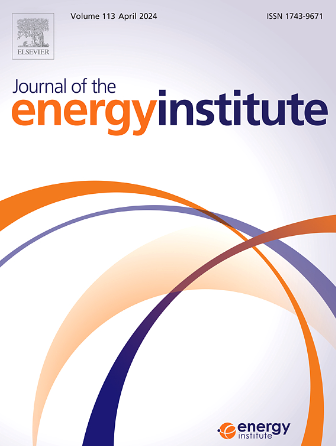模拟放射性废物中试规模等离子体熔化焚化炉排放的氯苯和多氯联苯/氟化氟化合物:废物组成和操作参数的影响
IF 5.6
2区 工程技术
Q2 ENERGY & FUELS
引用次数: 0
摘要
有效和安全处置放射性废物仍然是一项重大的全球挑战。等离子体技术以其高效、安全的特点得到了广泛的应用,但对二次污染物排放的研究还很有限。研究了中国某中试高温等离子体熔炼焚烧炉处理模拟放射性废物时,不同处理条件下橡胶、聚氯乙烯(PVC)和废树脂对氯苯(CBzs)、多氯二苯并对二恶英和二苯并呋喃(PCDD/Fs)的排放情况。烟气中CBzs和PCDD/Fs的总浓度分别为3.445 ~ 117.192 μg/Nm3和0.006 ~ 0.408 ng TEQ/Nm3。废树脂、PVC、橡胶等高氯废弃物增加了CBzs和PCDD/Fs的排放,而PVC和橡胶共添加则通过协同效应减少了PCDD/Fs的排放。优势同系物包括2,3,7,8- tcdd, 2,3,4,7,8- pecdf和HCBz。相关分析表明,1,4- dcbz与PCDD/Fs呈显著的线性相关,急冷塔和过滤器之间的压差与PCDD/Fs呈正相关,特别是在添加PVC和橡胶时。本研究不仅探讨了废弃物类型和大气污染控制装置参数对PCDD/Fs排放的影响,而且为加强放射性废弃物的安全处置和改进等离子体技术工艺提供了重要数据。本文章由计算机程序翻译,如有差异,请以英文原文为准。
Chlorobenzenes and PCDD/Fs emissions from a pilot-scale plasma melting incinerator of simulated radioactive waste: Impacts of waste composition and operational parameters
The efficient and safe disposal of radioactive waste remains a critical global challenge. While plasma technology is widely applied for its efficiency and safety, studies on secondary pollutant emissions remain limited. This research investigated emissions of chlorobenzenes (CBzs) and polychlorinated dibenzo-p-dioxins and dibenzofurans (PCDD/Fs) during the disposal of simulated radioactive waste from a pilot-scale high-temperature plasma melting incinerator in China under different waste conditions with rubber, polyvinyl chloride (PVC), and waste resin. Total concentrations of CBzs and PCDD/Fs in stack gas ranged from 3.445 to 117.192 μg/Nm3 and 0.006–0.408 ng TEQ/Nm3, respectively. High-chlorine wastes such as waste resin, PVC, and rubber increase the emissions of CBzs and PCDD/Fs, while co-adding PVC and rubber reduces PCDD/Fs emissions due to synergistic effect. Dominant congeners included 2,3,7,8-TCDD, 2,3,4,7,8-PeCDF, and HCBz. Furthermore, correlation analysis exhibited a markedly linear correlation between 1,4-DCBz and PCDD/Fs, and the differential pressure between the quench tower and filter correlated positively with PCDD/Fs, particular when PVC and rubber were added. This research not only explores the impact of waste type and parameters of air pollution control devices on PCDD/Fs emissions, but also provides significant data to enhance the safe disposal of radioactive waste and improves plasma technology processes.
求助全文
通过发布文献求助,成功后即可免费获取论文全文。
去求助
来源期刊

Journal of The Energy Institute
工程技术-能源与燃料
CiteScore
10.60
自引率
5.30%
发文量
166
审稿时长
16 days
期刊介绍:
The Journal of the Energy Institute provides peer reviewed coverage of original high quality research on energy, engineering and technology.The coverage is broad and the main areas of interest include:
Combustion engineering and associated technologies; process heating; power generation; engines and propulsion; emissions and environmental pollution control; clean coal technologies; carbon abatement technologies
Emissions and environmental pollution control; safety and hazards;
Clean coal technologies; carbon abatement technologies, including carbon capture and storage, CCS;
Petroleum engineering and fuel quality, including storage and transport
Alternative energy sources; biomass utilisation and biomass conversion technologies; energy from waste, incineration and recycling
Energy conversion, energy recovery and energy efficiency; space heating, fuel cells, heat pumps and cooling systems
Energy storage
The journal''s coverage reflects changes in energy technology that result from the transition to more efficient energy production and end use together with reduced carbon emission.
 求助内容:
求助内容: 应助结果提醒方式:
应助结果提醒方式:


